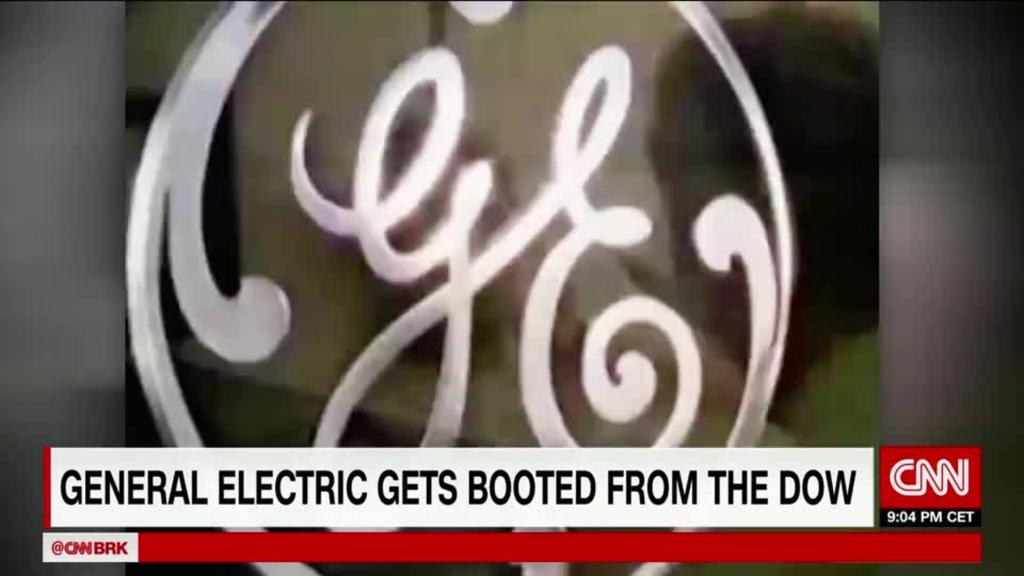
It's the end of an era.
General Electric, as of Tuesday morning, is no longer in the Dow.
There have been tons of funereal stories about GE (GE) getting kicked out of the Dow after 111 years. But there haven't been as many about the "new kid" in the Dow -- Walgreens Boots Alliance (WBA).
You've probably already heard of -- and shopped at -- a Walgreens.
It's the giant drug store chain that first set up shop in Chicago in 1901... six years before GE began its more than century long stretch in the Dow.
But what's up with the Boots Alliance name?
Well, it refers to the company's other big business. Walgreens bought British-based Alliance Boots in 2015. Boots is a drugstore retailer and Alliance is a drug wholesale and distribution company.
Walgreens is a company worth $66 billion that pulled in revenue of $33 billion and an operating profit of nearly $2 billion in its last quarter.
Related: What merger mania means for health care
And Walgreens is getting even bigger. It finally completed the purchase of more than 1,900 Rite Aid (RAD) stores in March.
That deal had been in regulatory limbo for years and Walgreens actually abandoned earlier plans to buy a bigger chunk of Rite Aid stores before agreeing to a new, smaller deal that finally passed antitrust muster.
Thanks in part to the Boots and Rite Aid deals, analysts expect Walgreens' earnings per share to increase at a 12% rate, on average, for the next few years.
In other words, the Dow is adding a healthy, if not particularly sexy or exciting company.
But it's one that isn't shrinking.
Shares of Walgreens are up about 50% over the past five years while GE's stock has plunged 45%.
With a price hovering around $67, Walgreens is now the 23rd biggest (or eighth-smallest if you're a half glass empty type) company in the Dow. Walgreens is just below Nike (NKE) and right above DowDuPont (DWDP).
Related: GE is shrinking itself even further
The Dow ranks its companies by stock price, not market value like the S&P 500. So even though GE is still valued at $111 billion, compared to a market cap of $66 billion for Walgreens, GE was the tiniest company in the Dow by far because its stock price had tumbled all the way to the low teens.
With GE getting shown the Dow door, drug maker Pfizer (PFE), with a price just above $36 a share, inherits the title of the Dow member with the smallest weighting.
Still, the addition of Walgreens is a bit curious.
It might make sense that more dynamic (and arguably more important) companies like Amazon (AMZN) and Google owner Alphabet (GOOGL) won't be added to the Dow because they have share prices above $1,000 and would put the Dow weighting severely out of whack. But it's worth asking why CVS (CVS) -- Walgreen's top rival -- wasn't added instead.
CVS, trading at about $71 a share, would have about the same weighting as Walgreens.
Related: Pharmacies surge on report Amazon won't sell prescription drugs
And CVS is a more diverse company by virtue of its ownership of the Caremark pharmacy benefits management firm. CVS also generated more revenue than Walgreens last year and is worth more, too.
What's more, CVS could soon become even bigger and more diversified thanks to its plan to buy health insurer Aetna (AET) for $67 billion.
Sure, the Dow already lists Aetna rival UnitedHealth (UNH). But that shouldn't matter.
The Dow includes banking giants JPMorgan Chase (JPM) and Goldman Sachs (GS) in it, not to mention Pfizer competitors Merck (MRK) and Johnson & Johnson (JNJ). It includes Microsoft (MSFT) and Apple (AAPL), too.
A spokesman for S&P Dow Jones Indices had no comment on why Walgreens was chosen for the Dow instead of CVS.
But when the decision to get rid of GE and Walgreens was made, S&P Dow Jones Indices said the move will make the Dow more "representative of the consumer and health care sectors of the US economy" and a "better measure of ... the stock market."
Adding CVS could have accomplished the same thing though.


